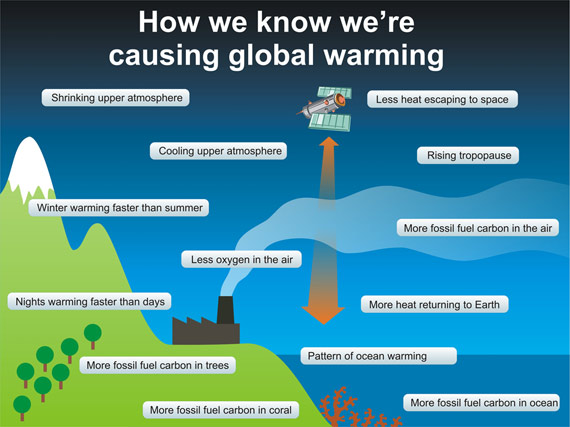Squish Like Grape
You are here
"I'm Not a Scientist"
Primary tabs
Five years ago this week a massive snowstorm shut down Washington, D.C. for several days. The family of Oklahoma Senator James Inhofe built an igloo on the National Mall and labeled it "Al Gore's new home" in a mocking tribute to Gore's efforts to publicize the seriousness of global warming. Inhofe told reporters he thought the igloo was "really humorous".
But as the year wore on, Inhofe and other global warming deniers had less to laugh about. 2010 would turn out to be the hottest year on record (that is, until it was topped by 2014.) Inhofe's own state was one of the hardest hit. Beginning in the fall of 2010 Oklahoma and its neighbors were plagued by drought conditions which only worsened in 2011; by 2012 the drought had spread to more than 80% of the contiguous United States. Now in its fifth year, the drought has abated somewhat but still afflicts many states. About 60% of Oklahoma is still suffering from drought.
Under these conditions, Inhofe and his colleagues have begun to change their tune. Their new tack is simply to acknowledge their lack of credentials. "I'm not qualified to debate the science over climate chanage," says Speaker of the House John Boehner. "I don't know the science behind climate change," says Senator Joni Ernst of Iowa. "Let the scientists debate and figure that out," says Louisiana Governor Bobby Jindal. "We can debate this forever," says Senate Majority Leader Mitch McConnell. The implied corollary is that until we can understand the science, we don't need to actually do anything about it.
On the surface, this all sounds like a moderate, pragmatic approach to climate issues, but it's not. Scientists have understood the effects of atmospheric CO2 for more than a century, and have been recording its increase since the late 1950s. There can be no doubt human activity is causing global warming.
One of the biggest clues that human activity is the major cause of global warming is to look at the pattern of warming. Temperatures are not uniformly increasing at every location and every hour of the day. Scientists are recording more warming at the poles than at the equator, more warming at night than in the day, more warming in the winter than in the summer, and more warming near the earth's surface than in the upper atmosphere. If the warming were caused by the sun, we'd see more warming at times and places where sunlight is more intense--just the opposite of the pattern we actually see.
Another clue is the type of carbon we find in the atmosphere. Most carbon atoms contain six protons and six neutrons, 12 total subatomic particles in the nucleus; the scientific shorthand for this is 12C. About one in a hundred atoms contains an extra neutron; this is known as 13C. (A very small number of carbon atoms have yet other numbers of neutrons, but they are not relevant to this discussion.) 12C is the easiest form of carbon for plants to process; they generally take in less 13C than is present in the atmosphere. Or, as a scientist would put it, plants have a lower 13C/12C ratio than the atmosphere. By inspecting carbon ratios of tree rings, scientists can determine the approximate 13C/12C ratio for every year of the tree's life. At the very least, they can tell whether the ratio is rising or falling over time. Sifting through tree ring data going back more than 10,000 years, scientists have determined that the ratio is at a lower level now than it has been in that entire time span. And it's not just tree rings. Coral reefs show the same pattern, as do atmospheric and oceanic carbon readings. At the same time, overall CO2 levels are higher than they've been in that time span. The only rational conclusion is that an increased amount of CO2 with 12C is the culprit.
Because fossil fuels are made from ancient plants, and because plants have a lower 13C/12C ratio than the atmosphere, burning fossil fuels decreases the 13C/12C ratio. This is exactly the effect scientists are seeing today. If fossil fuels are not to blame, it would be hard to imagine what is.
And again, scientists have known for more than a century that an increase in CO2 levels will cause warming in the atmosphere. Since we know CO2 levels are increasing, and all signs point to fossil carbon as the source, we don't need to be experts to connect the dots. Scientists have found conclusive evidence that global warming is real and that it's caused by human activity. The debate about the science is over.
The only question remaining is, what are we going to do about it? Unfortunately, given our elected policy makers' collective lack of concern, that is one area where we can't rely on the experts.
Theme by Danetsoft and Danang Probo Sayekti inspired by Maksimer



